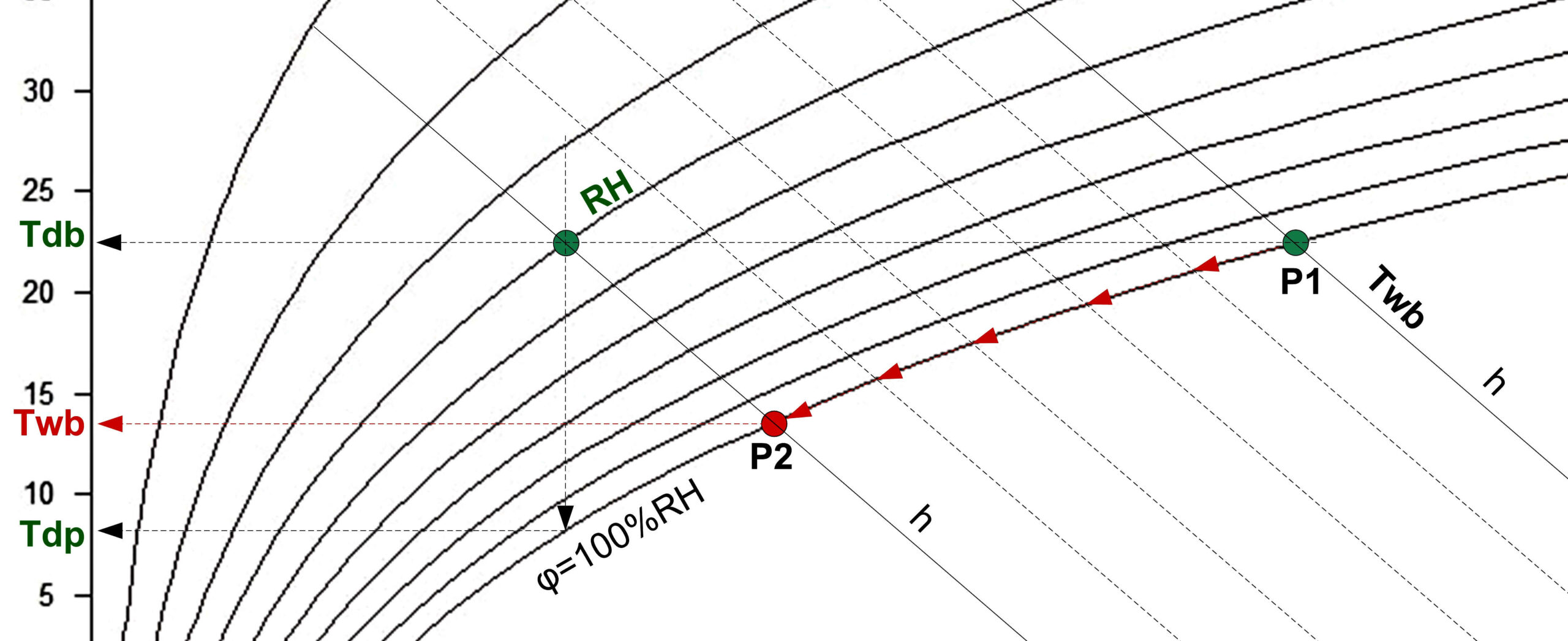Wet bulb temperature: Twb [°C]
The air is humidified by evaporating the water until a saturated state is reached. If the evaporated water already has the ambient air temperature, only latent heat is required for its evaporation, which is removed from the air by reducing the sensible heat (evaporative cooling). In this situation, therefore, a state change occurs at constant enthalpy until a saturated state is reached (intersection with the saturation curve, i.e. 100% RH). The temperature of this intersection of the isoenthalpy with the saturation curve is referred to in air conditioning technology as the “wet bulb temperature” or the “adiabatic cooling limit”.
At saturation, the wet bulb temperature is equal to the dry bulb temperature (Twb = Tdb)
Wet bulb temperature in other words: it is the temperature to which a surface (e.g. the mercury in a thermometer) covered with a wet material would cool if water were evaporating into the surrounding air. This cooling process depends on the humidity of the air – the drier the air, the more water can evaporate and the greater the cooling effect.
The wet bulb temperature is a key indicator of heat stress for humans and organisms because it combines the effects of temperature and humidity. If the temperature reaches approximately Twb= +35°C, the human body loses its ability to cool itself through sweat evaporation, which can lead to overheating and potentially fatal consequences.
Numerical determination of wet bulb temperature Twb is based on the publication presented here.

